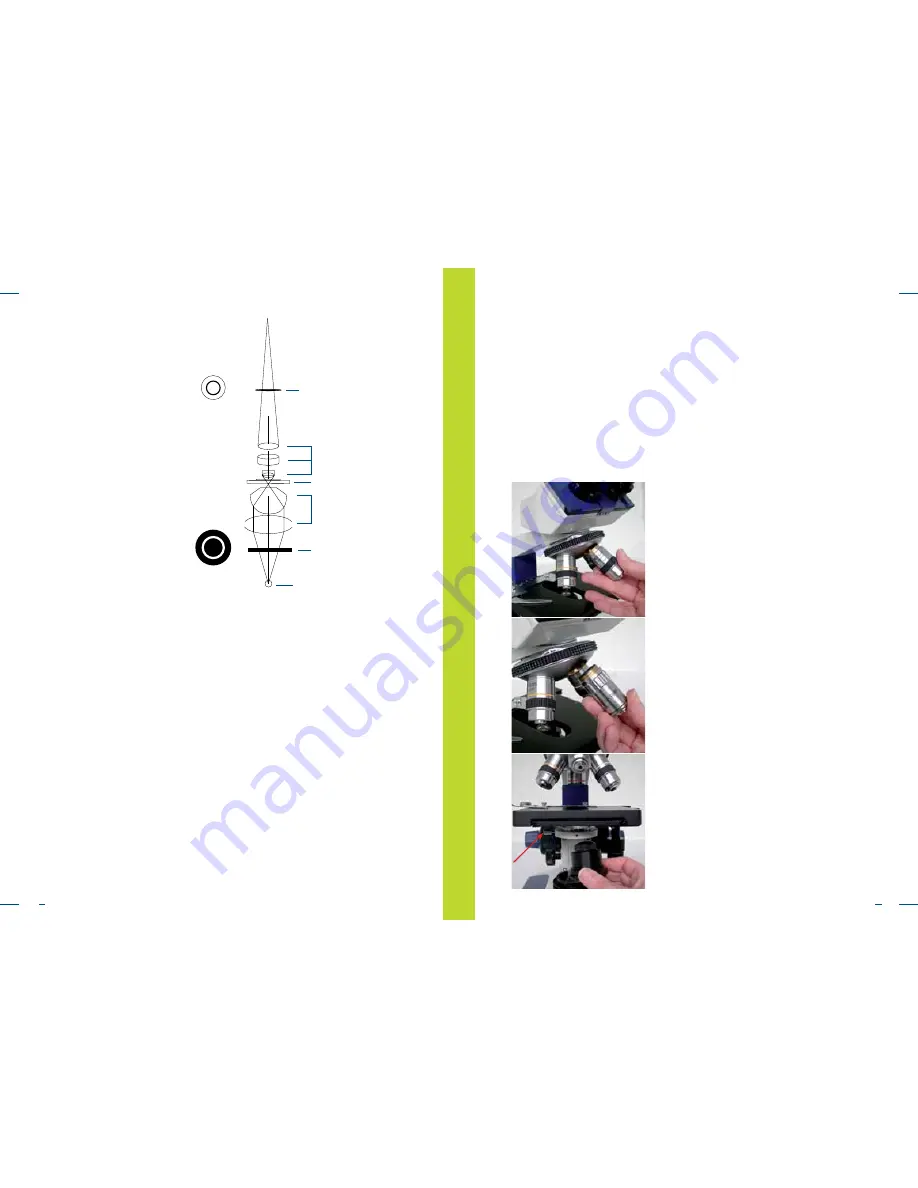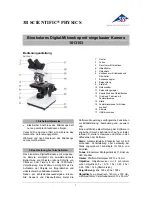
47
46
7. Phase contrast device
The dark field can be used to obtain sharp images due
to border effects such as light scattering and diffraction.
If the sample has a crystalline structure or directional
characteristics, polarized light can also be used.
The phase contrast method is a form of illumination in
which one part of the light beam is superimposed on
the rest of the light beam to produce interferences to
obtain a visible image of an otherwise invisible object.
A clear annular gap in the image plane of the condens-
er is reproduced on the rear image plane of the object
lens by the condenser and object lens. A phase shift
ring located in the rear image plane of the object lens
causes the light passing through this annular gap to
shift by a quarter of a wavelength compared to the light
diffracted by the object and the part of the rear image
plane not covered by the phase shift ring.
7. Phase contrast device
To convert the microscope to phase contrast operation,
follow the instructions below:
1. Unscrew one of the bright field lenses from the lens
turret.
Installation
2. Place the desired phase contrast lens into the lens
turret.
3. Loosen the fastening screw of the bright field
condenser and remove it from the mount.
Loosing the locking screw and remove the
condenser by pulling it downwards.
Object lens
Condenser
Clear annular gap
Phase annular gap
Sample
Bulb
Light path when using the phase contrast method
The image is generated by the interference effects of the
two combined light beams.
Elements of the otherwise invisible samples appear as
brightness differences due to the effect of the phase an-
nular gap.
































